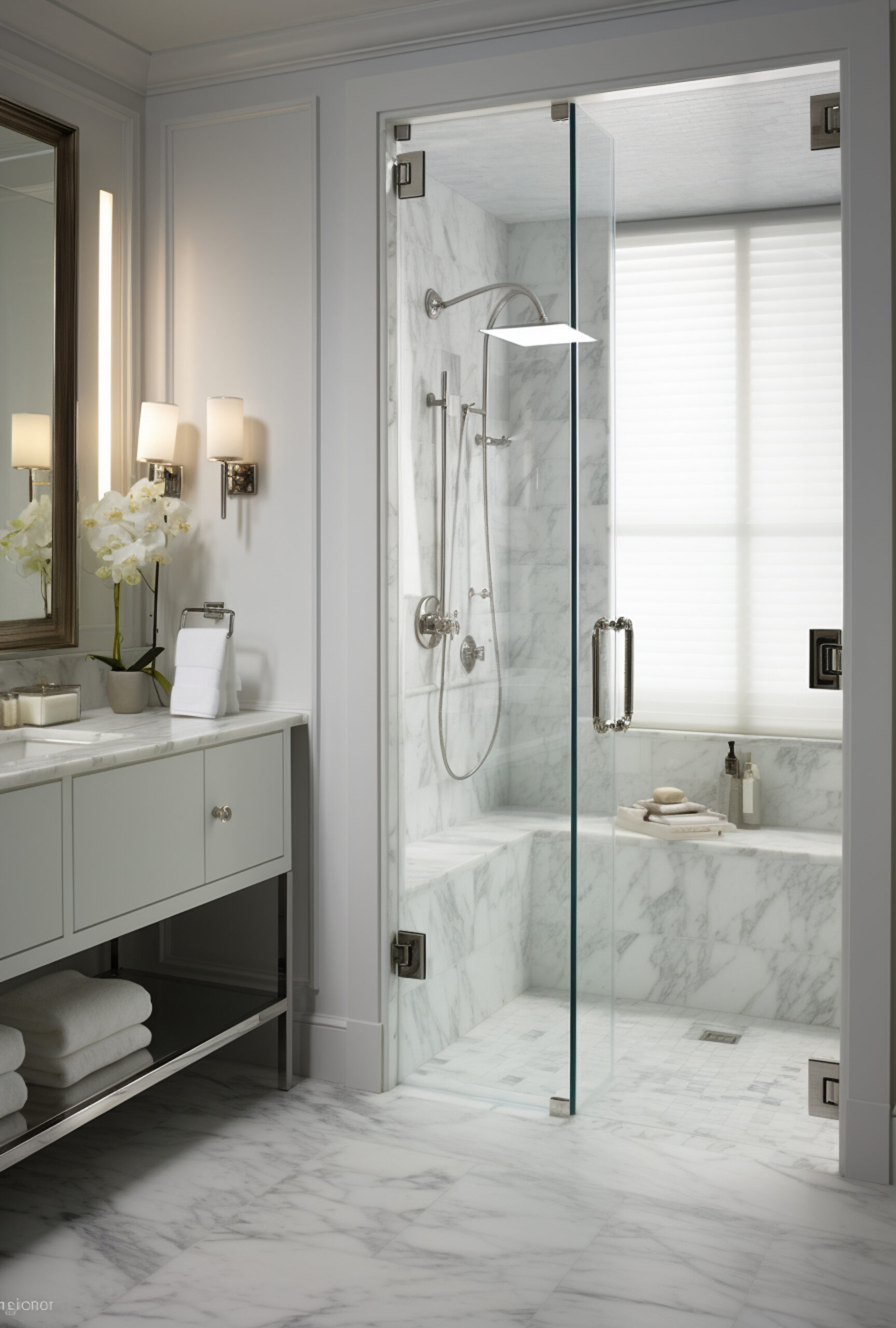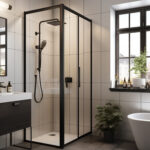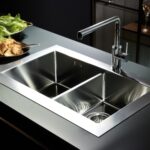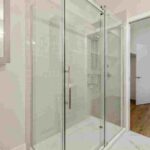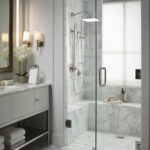The use of bathtubs has been around since 500 BC. Since then the material, shape, style, and size has been evolved. These bathtubs have been the best tools for relaxing and self-care for centuries. Today, we will discuss the acrylic bathtub pros and cons and Fiberglass pros and cons of two of the most used bathtub materials in today’s world. These two materials are Acrylic and Fibreglass.
An acrylic Bathtub is made of an acrylic sheet vacuumed into a bathtub. These vacuum sheets are usually reinforced to protect the fiberglass bathtub. Acrylic bathtub are available in many styles and sizes like acrylic bathtub freestanding. On the other hand fiberglass bathtubs are made of reinforced plastic, and are made of many layers of small interwoven glass strings heated with others to fit a desired shape or mold. Then, it’s molded, shaped, and sprayed with a resin gel coat. It’s one of the most affordable materials for bathtubs and one of the easiest to install such as acrylic freestanding tubs. In this article, we will draw a comparison of an acrylic bathtub vs fiberglass bathtub.
Advantages of Acrylic Bathtub
Durable
One of the most highlighted benefits is that acrylic is very durable and hard to damage. It does not chip or crack easily but if something happens, you can easily repair it even with a DIY project. Rather than being tensed about permanent marks or replacing the tub with a long process, they can be easily repaired, All thanks to their lightweight composition. Acrylic bathtub are proven to be easier to transport and install. This feature makes the installation and repair effortless lifting upstairs and placement in otherwise challenging positions. They also won’t need added floor support for a reliable installation.
Easy to Clean and maintain
Of course, this durability can only be considered without the proper maintenance. The good feature is that your acrylic bathtub cleaning will be a breeze. All you need to do is to make sure that you don’t use any harsh sponges, clothes, or chemicals that could probably damage the acrylic. The beauty of an acrylic bathtub is in its easy-to-maintain feature and smooth surface. This is an argument where an Acrylic bathtub wins in a comparison of acrylic bathtub vs porcelain. With proper care to prevent scratches, these bathtubs maintain their pristine appearance for many years to come.
Heat Retention
A benefit that’s specifically discussed in the list of acrylic bathtub pros and cons about acrylic in a bathtub is its heat retention. That means it won’t get quite as cold as other countertops made of marble or tile flooring. Bathing in an acrylic bath is a relaxing experience as these bathtubs impart a warmer touch. This feature makes them ideal for children and elders who prefer to have a warm feel rather than the chill of metal bathtubs.
Many Design Options
If you wish to design your bathroom, you can rely on acrylic bathtub options. These give a lot of advantages along with a lot of versatility. Acrylic bathtub offers a diverse range of shapes when it comes to choosing options like tub color, and sizes too such as acrylic bathtub freestanding. These are also available as an acrylic bathtub shower combo. These also provide ample flexibility for modern and classic bathroom designs and for corner bath installations. Utilizing vacuum-formed techniques, an acrylic bathtub can adopt various shapes, making them highly adaptable to different preferences.
Affordability
Generally, an acrylic bathtub is available at a more affordable and budget-friendly rate compared to other materials. Manufacturers and sellers are likely to include the acrylic bathtub price in bathroom suite deals because of their cost-effective production. However, intricate designs are available at a slightly higher price tag. Even in the comparison of acrylic bathtub vs porcelain bathtubs, acrylic tubs win for their affordability. These also come in an affordable acrylic bathtub shower combo.
The cons of acrylic tubs:
The Look
Although many designs are available in acrylic bathtub, some people do not prefer the plastic-like look that acrylic bathtub give compared to options like ceramic or marble. If you are looking for a luxurious and high-end option, acrylic bathtub might not be the ideal choice for you. Their availability in a diverse range of shapes and designs, and capability of meeting some high-end requirements is significant. However, these acrylic bathtub sometimes do not match the appearance of certain other materials. Additionally, some people think that acrylic bathtub feel hollow or less sturdy compared to more solid options like steel or cast iron tubs.
Sensitive to Certain Cleaning Products
Harsh cleaning products can stain and scratch an acrylic tub. Care must be taken to ensure nothing is used that can cause damage to the surface areas. One drawback of acrylic bathtub is their vulnerability to staining and scratching when improperly maintained or cleaned. However, the good news is that these issues can be easily addressed through simple and inexpensive repairs. Another downside of acrylic bathtub is their sensitivity to Harsh acrylic bathtub cleaner, requiring careful consideration of the cleaning products used. Regular acrylic bathtub cleaning with appropriate, non-harsh materials is necessary to avoid staining and scratching issues.
Additionally, while acrylic bathtub are very resistant to fading, long-term exposure to direct sunlight or harsh acrylic bathtub cleaner causes color fading/ discolorations. To suppress this effect, it is recommended to install the acrylic tub away from direct sunlight or utilize curtains or blinds to protect and maintain its shiny appearance.
Advantages of Fiberglass Bathtubs
Affordable
A fiberglass tub is also one of the most affordable options in these segments. Its main advantage over other types of tubs. Fiberglass models generally cost less to buy than acrylic, epoxy resin, stone materials, cast iron, and copper tubs. A fiberglass tub’s affordability is one of its main advantages. Compared to tub options made of metal such as brass, copper, and cast iron, fiberglass is an extremely budget-friendly tub material, says Inman News. It is also less costly than bathtubs made of stone such as soapstone, granite, marble onyx, and solid surface materials. A fiberglass tub is even less costly than an acrylic bath, another plastic material that falls on the lower end of the price spectrum, so it is usually the most affordable tub option available.
Lightweight
Some of the pros of fiberglass are similar to those of acrylic. For instance, it’s a relatively lightweight material that isn’t as hard to install as some other bathtub material options. This makes it a particularly good option if you’re looking for a suitable option for a tub that’s on the upper floor of the house. A fiberglass tub is lightweight, which usually makes for an easier installation like acrylic freestanding tubs. When dealing with heavier tub materials such as cast iron or stone, it can be difficult to carry the tub to the bathroom and maneuver in place. Because a fiberglass tub is lightweight, it means you usually don’t have to worry about installing additional support on the floor for the tub, especially in a second-floor bathroom.
Easy to Repair
Another similarity the two share is that fiberglass is also easy to repair if you notice a scratch or crack. The only drawback is that this is because the fiberglass is softer, meaning it will also scratch and crack easier than a material like acrylic. A fiberglass tub has a softer finish that may be prone to scratches and cracks, but it is also repairable, which means you don’t have to replace your entire tub if damage occurs. By sanding the surface and using a filler product and epoxy-based coating, you can smooth a fiberglass tub’s surface so it looks like new. You can purchase a fiberglass repair kit that contains all of the necessary materials, but the process can be time-consuming and difficult. If you’re not an experienced do-it-yourselfer, you may prefer hiring a professional fiberglass resurfacing company to handle the repairs.
The cons of fiberglass tubs
Not as Durable
Fiberglass is a porous material, so if the protective top layer wears over time, you’re going to have to contend with water damage and even warping. There are also some durability issues when it comes to fiberglass bathtubs. As we just mentioned, this is in part because the material is soft. Because fiberglass bathtubs are lightweight, they are thinner than other tub materials, which often makes them less durable than the alternatives, warns Badeloft Luxury Bathrooms. Typically, a fiberglass tub has a lifespan of 10 to 15 years. The soft finish is also easy to scratch and crack, and over time, the color may begin to fade as well. Unlike a harder material such as metal or stone, a fiberglass tub is also flexible so it can shift, which may cause the caulk around the tub to crack so the entire unit moves when you step in it. The movement can also cause cracks or dents in the tub’s surface.
Can Fade Over Time
Finally, while your fiberglass bathtub will last up to 15 years, you might notice the color fading over time. This is because the color in fiberglass doesn’t always permeate through the layers that make up the material, making them more susceptible to fading over time especially when subjected to direct sunlight. While a fiberglass tub is made by forming several layers of material into the desired shape, the final product is coated with a gel coat resin to produce a shiny finish. Because the gel coat is sprayed onto the tub, the thickness and color are not always uniform across the tub surface. As a result, the tub may be uneven and spotted in some areas. The color doesn’t go all the way through the individual layers either, which is why it is easy for the fiberglass bathtub to fade.
Conclusion
I hope the above information is helpful for you to draw a comparison between an acrylic bathtub vs fiberglass bathtub. Both of these materials have their own set of advantages and disadvantages. However, it is important to acknowledge that these pros and cons are to be considered for specific needs, situations, and decors of bathrooms. Companies like Ortonbath and Cera supply some of the best acrylic bathtub in countries like Germany, Russia, and Colombia.

